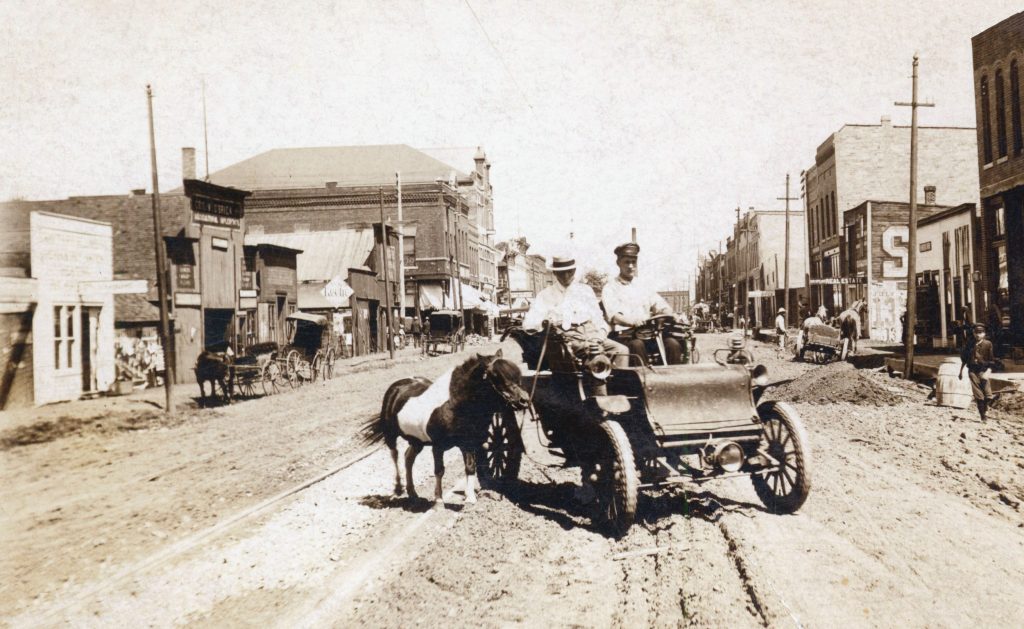The ancient Mesopotamians used it to waterproof temple baths and water tanks. The Phoenicians caulked the seams of their merchant ships with it. In the days of the Pharaohs, Egyptians used the material as mortar for rocks laid along the banks of the Nile to prevent erosion. Indeed, the history of asphalt dates long before the sleek paved roads we are so familiar with today. So, what is the history of asphalt? And how long has it been used for driveways and roads?
The Beginning Of Bitumen: 600,000,000 B.C.
The story of asphalts beginning actually dates back millions of years – when Earth’s surface consisted of a primordial soup full of microscopic algae and other small organisms. When these creatures died, they sank to the ocean floor forming a layer of sediment until the combination of pressure and heat transformed this layer into bitumen – the raw material used to produce asphalt today. Eventually, this material formed deposits or lakes of bitumen on earth’s surface. Many of these deposits can still be found in Alberta, southern California, the Dead Sea, Venezuela, and Tobago.
The First Recorded Asphalt Road: 625 B.C.
While asphalt had commonly been used to seal together tools or waterproof ships, it wasn’t until 625 B.C. that the first recorded road was made with asphalt. This road was laid in Babylon, during the reign of King Nabopolassar.
The First Modern Asphalt Road: 1824
In 1824, large blocks of natural asphalt rock were used to pave the Champ-Elysses, a wide boulevard in Paris. This event was a huge undertaking, ultimately resulting in the first modern asphalt road.
First Asphalt Paving: 1870
The first application of asphalt paving took place in Newark, N.J. in 1870. A product of Belgian chemist Edmund J. Desmelt, this modern equivalent of the asphalt paving we use today was put down in front of City Hall on William Street.
Innovations In Asphalt: 1907
As the automobile rose in popularity, a demand for better roads led to innovations in both producing and laying asphalt. This included making the switch to refined petroleum-based asphalt pavement, as well as the introduction of the mechanical drum mixers and spreaders.
Asphalt Today
The national energy crisis of 1970 underscored the need for conservation of natural resources. Since that time, an increasing amount of recycled asphalt has been incorporated in mixes. In fact, asphalt pavement is America’s most recycled material. Recycling more than 70 million metric tons of asphalt paving material each year. Today, many homeowners and businesses choose asphalt for driveways and parking lots because it’s easy to maintain and cost-effective.










